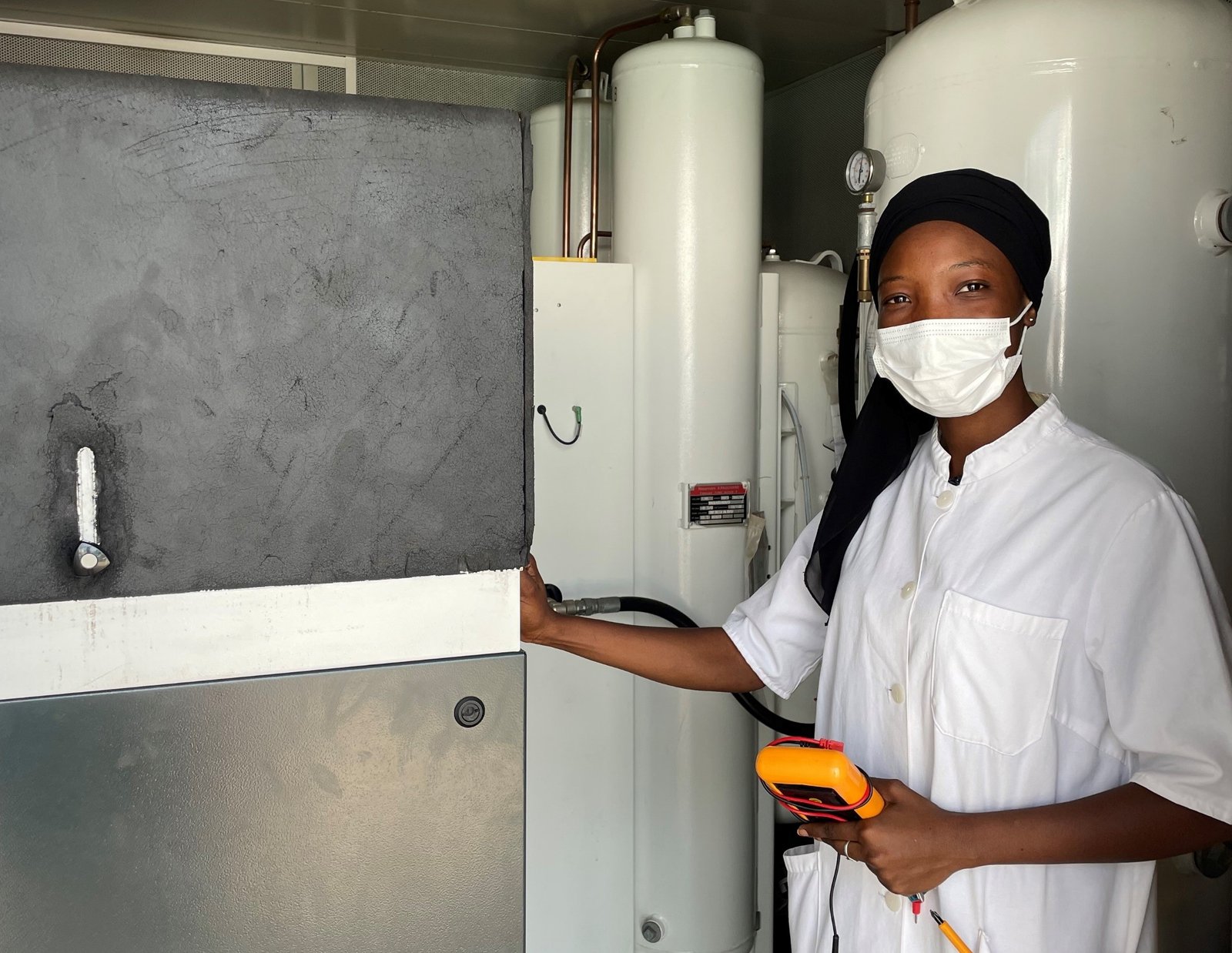Medical oxygen is an essential treatment for people struggling to breathe—across countries, ages, and diseases. However, access to oxygen has long been neglected in health system planning, and the COVID-19 pandemic exposed this weakness. Health facilities in low- and middle-income countries faced surging demand that exceeded supply, leading to unnecessary deaths. With the recent passing of the World Health Organization’s resolution on increasing access to medical oxygen, now is an opportune time to translate pandemic investments into long-term, high-quality respiratory care services.
Universal health coverage (UHC) means all people have equitable access to the full range of high-quality health services without financial hardship. Achieving this goal of “health for all” is not possible if people cannot access oxygen therapy when and where they need it. National oxygen ecosystems need to be stronger and more sustainable with coordinated efforts across policy and financing, health infrastructure, clinical operations, data systems, and more. This article applies a UHC lens to an essential health service—oxygen therapy—to demonstrate the clear ties and persistent issues in achieving universal access.
1. “UHC means all people have equitable access …”
For oxygen, this means achieving uninterrupted access based on the necessary infrastructure, equipment, and supplies that are available across all departments in a health facility and all levels of a health system.
Traditionally, medical oxygen has been primarily available in surgery and critical care departments, leaving certain patient groups—such as pregnant women and newborns—without essential treatment in times of need. Furthermore, oxygen therapy is often only available in specialty hospitals in urban settings, making it challenging for patients who live far from a hospital to receive prompt care, which can be life-threatening.
Health systems must ensure oxygen is available across departments and at the lowest level of care—or through a sufficient referral system to a higher-level facility—so that this life-saving therapy is available whenever needed. In addition, a key part of expanding equitable access to respiratory care is integrating diagnostic tools, such as pulse oximetry, into standard service delivery at primary care facilities.
Overall, medical oxygen should be considered a health service utility, no different from water, sanitation facilities, or electricity. As such, expanding access to oxygen and pulse oximetry should be prioritized through national oxygen planning and global investments.

A biomedical engineer in Senegal services a pressure swing adsorption oxygen generation plant. Photo: PATH/Conner House.
2. “… to the full range of high-quality health services …”
For oxygen, this means ensuring high-quality delivery for all patients.
High-quality oxygen delivery requires thorough and consistent management within and across facilities so that every patient receives appropriate and timely respiratory care. Any obstacles in this system can create a life-or-death situation.
Strong oxygen systems need a sufficient and appropriate mix of oxygen equipment and infrastructure that adheres to global and local guidelines around oxygen device use and oxygen purity. There also must be a sufficient supply of parts and accessories to maintain the equipment and back-up systems, such as oxygen cylinders or concentrators, in case of emergencies or surges in demand.
Sufficient human capacity is also critical for strong oxygen systems, including biomedical engineers or technicians to maintain oxygen equipment and health care workers to administer oxygen therapy. Limited knowledge and skills among health care workers to properly diagnose and treat hypoxemia can lead to delays in administration of oxygen therapy, as does a limited number of technicians that can service equipment. This is a critical gap in many low- and middle-income countries, and appropriate recruitment and training for these individuals should be prioritized.

Zambia’s Minister of Health, Sylvia T. Masebo at the launch of the country’s first National Medical Oxygen Strategic Plan. Photo: PATH
3. “… without financial hardship”
For oxygen, this means protecting people from financial risk.
High out-of-pocket costs for oxygen therapy have prevented patients and families in low- and middle-income countries from accessing the care they need. For a child hospitalized with pneumonia, for example, the average total cost of treatment can range from US$55 to US$243. These are sums that can force families into—or further into—poverty.
When patients with severe diseases need critical care like oxygen therapy, governments must develop innovative financing mechanisms to cover the cost of that care. The costs of medical oxygen treatment should be incorporated into sustainable finance plans, such as national or social health insurance schemes, to protect individuals and communities from the associated financial risk and make health spending more predictable.
It is imperative that country governments reexamine their approaches to financial risk protection and consider their unique populations to improve equitable access to oxygen. Holistically and sustainably funded health services improve health care access for everyone and ensure continuity of care—even during emergencies like COVID-19.
Advancing toward UHC
No single country or entity can achieve UHC on its own. Attaining “health for all” requires a concerted effort by governments, the private sector, civil society, and other stakeholders to bolster political commitment and drive action toward health systems strengthening, sustainable health financing, investment in human resources, enhanced access to medicines and vaccines, and coordinated monitoring and evaluation to measure progress. Equitable access to oxygen is a critical element to this “health for all” vision.
Global stakeholders and national governments must ensure oxygen access remains a targeted focus among the various competing health priorities in order to continue investments in oxygen production and supply, attain universal oxygen access, and support efforts to achieve UHC—to save and sustain lives.



